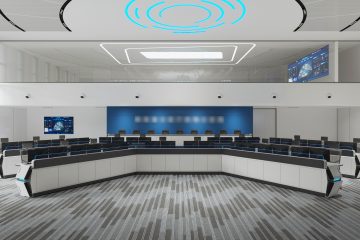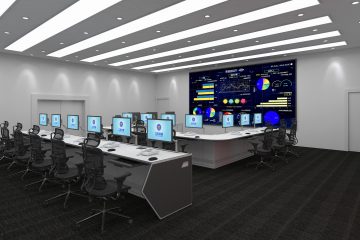Introduction to Mission-Critical Operations Centers
Mission-critical operations centers are vital facilities where continuous monitoring and management of critical activities take place. These centers are pivotal in sectors such as emergency services, military operations, utilities, and large-scale industrial facilities. Their effectiveness directly impacts safety, security, and operational efficiency, making their optimization crucial.
Significance of Control Consoles in Operations Centers
Control consoles are the central elements of any operations center, serving as the primary interface between operators and the systems they monitor and control. The design and functionality of these consoles significantly influence the efficiency, comfort, and effectiveness of the operators.
Role of Control Consoles
Control consoles are designed to facilitate the seamless integration of various data streams and control mechanisms, enabling operators to make informed decisions quickly. They support real-time monitoring, data analysis, and the execution of control commands, ensuring the smooth operation of mission-critical tasks.
Ergonomic Design and Functionality
Workstation Layout
- Adjustable Consoles: Consoles should be height-adjustable to accommodate different operators and reduce strain.
- Monitor Arrangement: Multi-screen setups should be arranged to provide comprehensive visibility without causing clutter. Monitors must be at eye level and optimally distanced to prevent eye strain.
Comfort and Accessibility
- Seating: Ergonomic chairs with proper lumbar support are essential to ensure operator comfort during long shifts.
- Reachability: Controls and inputs frequently used by operators should be within easy reach to minimize unnecessary movements.
- Lighting: Adjustable lighting systems help reduce glare and eye strain, adapting to various times of the day and operator preferences.
Effective Management of Mission-Critical Operations Centers
Personnel Training and Workflow
- Continuous Training: Operators should undergo regular training on new technologies, protocols, and emergency procedures to stay updated and prepared.
- Shift Rotation: Implementing effective shift rotation prevents operator fatigue and maintains high alertness levels.
Standard Operating Procedures (SOPs)
- SOPs Development: Clearly defined SOPs for various scenarios ensure quick and effective responses.
- Regular Drills: Conducting regular drills helps test and improve the preparedness and efficiency of the operations center and its staff.
Integrated Technologies and Security Measures
Unified Interface
- Software Integration: Systems should be integrated into a single, user-friendly interface to reduce cognitive load and improve situational awareness.
- Real-Time Data: Implement systems that provide real-time data and alerts for prompt responses to critical situations.
Advanced Technologies
- AI and Automation: AI can be used for predictive analytics, automated monitoring, and incident detection, allowing operators to focus on complex issues.
- Cybersecurity: Robust cybersecurity measures are essential to protect sensitive data and control systems from breaches and cyber-attacks.
Best Practices for Optimization
Performance Monitoring and Feedback
- Metrics and KPIs: Establish key performance indicators (KPIs) to monitor the effectiveness of operations, such as response times, error rates, and system uptime.
- Regular Reviews: Conduct regular performance reviews and feedback sessions to identify areas for improvement.
Environmental Control
- Climate Control: Maintain optimal temperature and humidity levels for operator comfort and equipment performance.
- Ventilation: Ensure proper ventilation to maintain air quality and remove excess heat generated by electronic equipment.
Noise Control
- Soundproofing: Use soundproof materials to minimize external noise and internal sound pollution.
- White Noise Systems: Implement white noise systems to help mask distracting sounds and maintain operator focus.
Redundancy and Backup Systems
- Backup Power: Ensure uninterruptible power supplies (UPS) and backup generators are in place to maintain operations during power outages.
- Redundant Systems: Implement redundant data systems and communication lines to prevent single points of failure.
Collaborative Environment
- Communication Tools: Equip the operations center with robust communication tools to facilitate quick and clear information sharing among team members.
- Collaborative Spaces: Design spaces that encourage teamwork and collaboration without disrupting individual focus.
Conclusion
Optimizing mission-critical operations centers involves a comprehensive approach that focuses on ergonomic design, advanced technology integration, effective management practices, and continuous improvement. By prioritizing these aspects, organizations can enhance the performance, reliability, and safety of their operations, ensuring they can effectively handle critical situations and maintain smooth operations at all times.



0 Comments